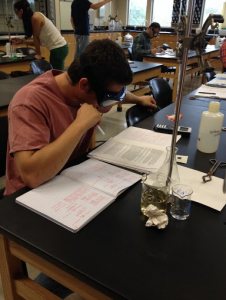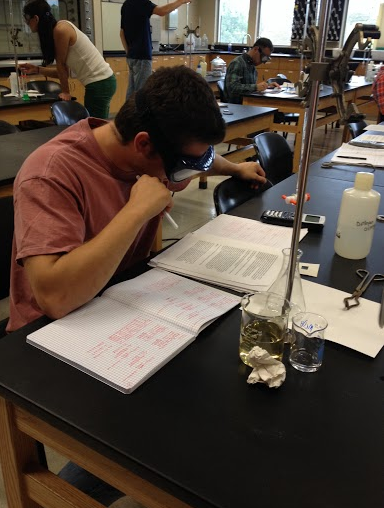While a chemical compound explosion injured a graduate student at the University of Minnesota last June, lab safety continues to be a priority at St. Thomas, which requires all students to take at least one lab science class to graduate.
Lab safety at St. Thomas is a standard part of protocol for students and staff, especially at the beginning of a new academic year, according to Director of Environmental Health and Safety Colin Brownlow. There is no trial and error involved, and the chemistry department closely monitors all experiments involving highly reactive chemicals, Brownlow said.

“We have a laboratory safety program that includes a list of extremely hazardous reactive chemicals,” Brownlow said. “If people are doing new procedures with them, we have a review system in place where the chair of the chemistry department reviews what they are doing … to make sure they have a plan in place to handle those materials properly.”
Besides faculty training, student lab assistants are also involved in lab training sessions every semester. Brownlow said they are trained to handle burns, chemical splashes, fires and extreme weather conditions.
Junior Rachel Beck, a student researcher in the chemistry lab, said she has received thorough safety training.
“In lab, we begin each semester with a review of safety protocol by the lab instructor,” Beck said. “During the semester, relevant safety information is reviewed with each lab. As a part of summer research, students attend a large group training session. Everything from chemical safety in the lab to environmental safety hazards is covered.”
Most of the experiments, especially for general science classes, are traditional wet chemistry experiments during which students are mixing chemicals in a solution, Brownlow said. Many of these traditional chemistry experiments are done in fume hoods that ventilate to the outside and involve little risk.
Brownlow said labs for first-year chemistry students often include non-toxic items and diluted material in small quantities to introduce students to proper lab practice while the risk is low.
The chemistry department conducts regular lab safety inspections to look for potential safety hazards. In addition, all science halls are equipped with sprinkler systems and smoke detectors.
Junior Jacob Held, a biology major, said he feels St. Thomas students are receiving proper training before conducting experiments in labs.
“The professors have us use gloves and goggles, and they always make sure to tell us about the things we are supposed to be using and how dangerous they are and what to be cautious about,” Held said.
Brownlow said no major accidents have occurred at St. Thomas.
“Never has there been an instance where an experiment has gone terribly wrong,” Brownlow said. “We have had a few instances that people did not expect and people got on top of it right away. But a lab fire or explosion has never occurred.”
Although there is always some potential risk, Brownlow said students should feel confident that St. Thomas has a very strong safety program.
“I remain impressed by the faculty with regard to safety,” Beck said. “Questions are encouraged, and safety has always been made a clear priority.”
Margaret Murphy can be reached at murp6449@stthomas.edu.



